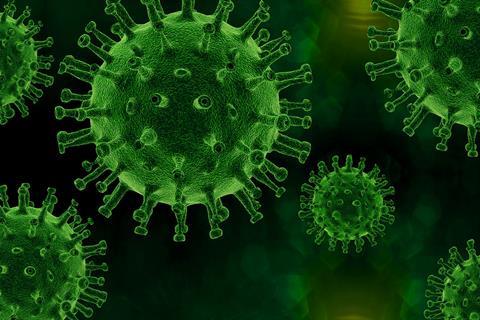A team of UCF researchers, led by Materials Science and Engineering Professor Sudipta Seal, have been awarded a patent for their nanomaterial-based disinfectant that can kill several viruses, including COVID-19. This is the 86th patent that Seal has been awarded through the UCF Office of Technology Transfer.

The Pegasus Professor and chair of the Department of Materials Science and Engineering says this patent was awarded much faster than most, which demonstrates the importance of the disinfectant.
“We are very excited to get this patent accepted so quickly, and we’re glad that the work is of great value for combatting viruses and pathogen-born infections,” Seal says. “Thanks to the US Patent and Trademark Office for recognizing this work and to the UCF Office of Technology Transfer for its support.”
Co-recipients of the patent include Seal’s postdoctoral researcher, Craig Neal ’14 ’16MS ’21PhD, and his former research assistant, Udit Kumar ’22PhD.
Nanomaterial coating
The COVID-killing coating is made with a nanomaterial that activates under white light, such as sunlight or LED light. As long as the nanomaterial is exposed to a continuous light source, it can regenerate its antiviral properties, creating a self-cleaning effect.
The efficacy of the disinfectant was tested and proven through a study that was published in ACS Applied Materials and Interfaces this past year. The study found that the coating can not only destroy the COVID-19 virus, but it can also combat the spread of Zika virus, SARS, parainfluenza, rhinovirus and vesicular stomatitis.
The research was funded by the U.S. National Science Foundation’s RAPID program and conducted by a multidisciplinary team of researchers, including Griff Parks, a professor in the UCF College of Medicine and the co-principal investigator of the grant.
Next steps
Now that the disinfectant has been patented, the research team will continue testing the product and UCF will seek a commercial partner to manufacture and sell it to a wide range of customers within the next few years.
“We plan to carry on the work in larger samples and also to test in vivo models and other means of infection control,” Seal says. “The process is well defined, and we plan to work with an industry partner to bring it to the mass market.”




No comments yet